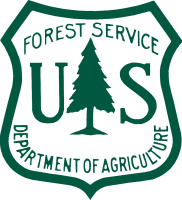

Luquillo
Overview
In 1990, the University of Puerto Rico established the 16-ha Hurricane Recovery Plot in the lowland wet forest of the Luquillo Experimental Forest, a long-term research site of the U.S. Forest Service and the largest protected forest area in Puerto Rico. This insular forest represented in the plot contains roughly 150 tree and shrub species, and, in 1992, field crews began censusing all stems with a dbh ≥ 1cm. Three major hurricanes have struck the plot over the past 30 years (Hugo, 1989; Georges, 1998; Maria, 2017) allowing an unparalleled opportunity to study tropical rainforest with frequent intense wind disturbance. The most recent storm was the most severe in 89 years and caused stem damage and mortality in excess of previous storms. How this storm will influence the trajectory of forest response, including patterns of recruitment and delayed mortality, are the future goals of the project.
In addition to hurricane disturbance, we also address questions of land use history and drought. A portion of the plot was logged and in agriculture before abandonment in the 1930s; the remainder represents well-conserved native forest. This has given us great opportunity to study how secondary forests (now more common in the tropics than primary forest) will develop along this “anthropogenic ecotone”. A three-month drought in 2015 caused reduced growth among some species but did not result in any excess mortality. Nonetheless, an ecosystem demography model parameterized using the drought suggests net ecosystem productivity will reach 0 by 2036 if the region continues to warm and dry out as current climate scenarios suggest. We continue to refine our understanding of how this wet forest will respond to increased drought frequency.
Luquillo is one of 28 NSF Long Term Ecological Research (LTER) field sites. LTER’s mission is to provide the scientific community, policy makers, and society with the knowledge and predictive understanding necessary to conserve, protect, and manage the nation’s ecosystems, their biodiversity, and the services they provide. The LTER Network was founded in 1980 by the National Science Foundation with the recognition that long-term research could help unravel the principles and processes of ecological science, which frequently involves long-lived species, legacy influences, and rare events. As policymakers and resource managers strive to incorporate reliable science in their decision making, the LTER Network works to generate and share useful and usable information.
Longitude: -65.816000000000




